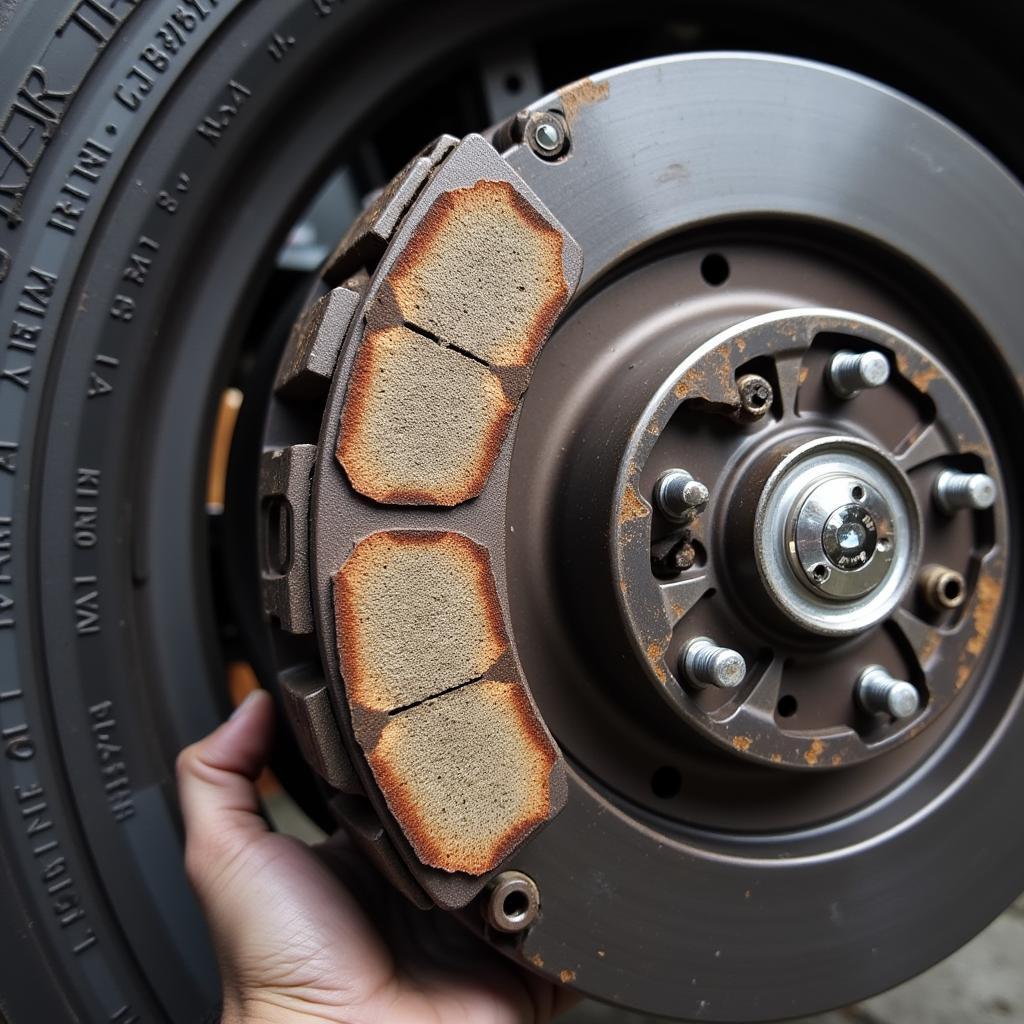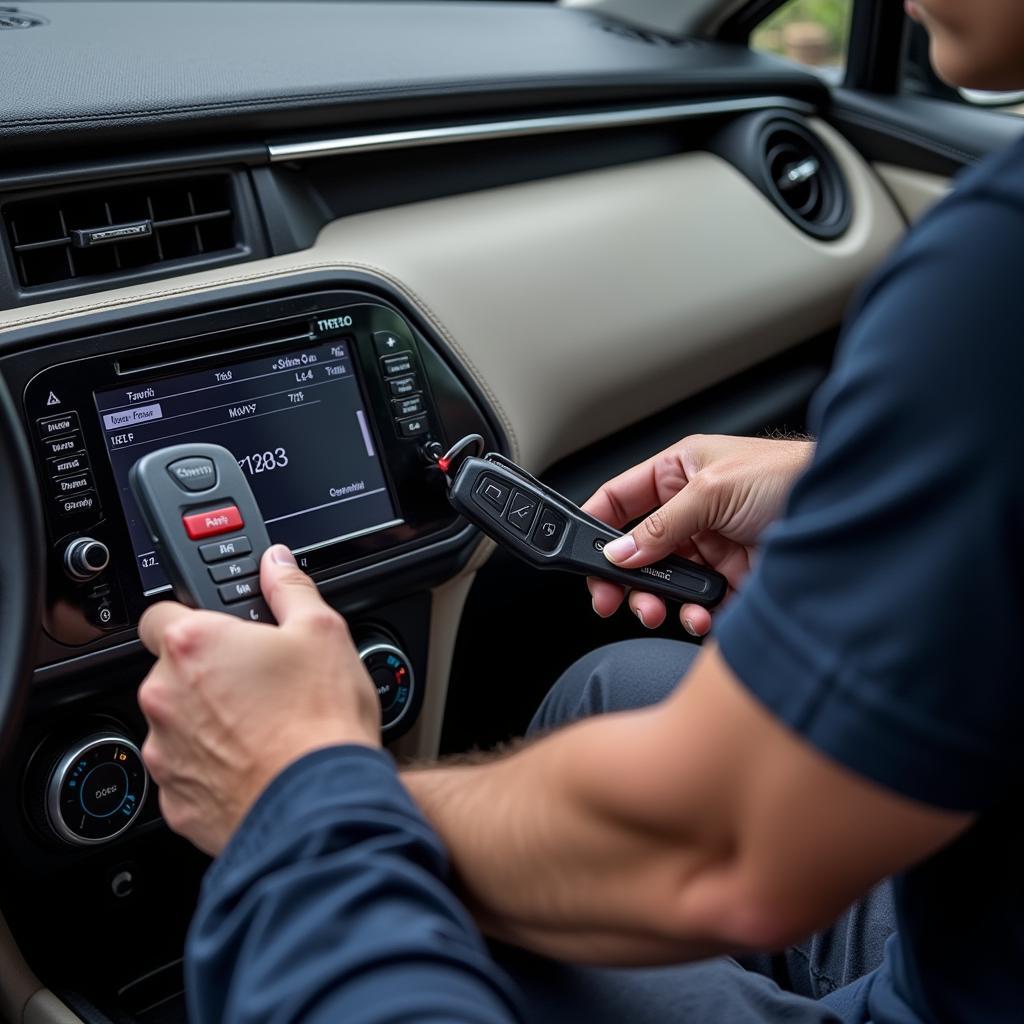The dreaded BMW X1 brake pad warning light can be a source of anxiety for any driver. Understanding what triggers this warning and how to address it can save you time, money, and potential headaches. This guide provides a comprehensive overview of the BMW X1 brake pad warning system, troubleshooting tips, and potential solutions.
Understanding Your BMW X1 Brake Pad Warning Light
The brake pad warning light is a crucial safety feature in your BMW X1. It illuminates when your brake pads have worn down to a certain point, signaling the need for replacement. Ignoring this warning can lead to costly repairs and compromise your safety. The warning system works by using sensors embedded within the brake pads. These sensors monitor the thickness of the pad material and trigger the warning light when it reaches a predetermined minimum level.
How Does the Brake Pad Warning System Work?
The system is surprisingly simple yet effective. A small wire embedded within the brake pad makes contact with the brake rotor when the pad material wears thin. This contact completes a circuit, triggering the warning light on your dashboard.
Troubleshooting the BMW X1 Brake Pad Warning
While the most common cause of the warning light is worn brake pads, other factors can sometimes trigger it. It’s essential to diagnose the issue correctly before replacing parts unnecessarily.
What if the Brake Pads are New?
If you’ve recently replaced your brake pads and the warning light persists, there are a few potential culprits:
- Faulty sensor: The sensor itself could be malfunctioning. This is relatively rare but can happen.
- Wiring issue: A damaged or disconnected wire in the sensor circuit can also trigger the warning light.
- Resetting the system: After replacing brake pads, the warning system may need to be reset. This can typically be done through the vehicle’s onboard computer or with a diagnostic tool.
“A common mistake drivers make is assuming they need new rotors when they see the brake pad warning light. In most cases, it’s just the pads that need replacing,” says Michael Schneider, Lead Automotive Diagnostic Technician at Bavarian Auto Solutions.
Checking Your Brake Pads Visually
While the warning light is a good indicator, it’s always a good practice to visually inspect your brake pads periodically. You can usually see the brake pads through the spaces in your wheels. Look for a thin layer of friction material remaining on the metal backing plate.  Worn Brake Pads on a BMW X1 If you see very little friction material, it’s time for new pads.
Worn Brake Pads on a BMW X1 If you see very little friction material, it’s time for new pads.
Replacing Your BMW X1 Brake Pads
Replacing brake pads is a relatively straightforward procedure that can often be done at home with basic tools. However, if you’re not comfortable working on your car, it’s always best to take it to a qualified mechanic.
Steps to Replace Your Brake Pads
- Gather your tools: You’ll need a jack, jack stands, lug wrench, and a few basic hand tools.
- Lift the vehicle: Safely lift and secure the vehicle using the jack and jack stands.
- Remove the wheel: Remove the wheel to access the brake caliper.
- Retract the caliper piston: Use a C-clamp or specialized brake tool to retract the caliper piston.
- Remove the old brake pads: Slide the old brake pads out of the caliper.
- Install the new brake pads: Install the new brake pads, ensuring they are seated correctly.
- Reassemble the caliper: Reassemble the caliper and reinstall the wheel.
- Lower the vehicle: Lower the vehicle and torque the lug nuts to the correct specification.
“Remember to always use high-quality brake pads designed for your BMW X1,” advises Maria Sanchez, Senior Automotive Engineer at German Auto Experts. “Using inferior pads can compromise braking performance and safety.”
Conclusion
The BMW X1 brake pad warning light is a vital safety feature. Understanding how it works, troubleshooting potential issues, and knowing how to replace your brake pads can save you time and money. While this guide provides a comprehensive overview, always consult your vehicle’s owner’s manual for specific instructions and recommendations. Don’t hesitate to contact a qualified mechanic if you have any doubts or concerns. Addressing the brake pad warning promptly ensures your safety and maintains the performance of your BMW X1.
FAQ
- How long do BMW X1 brake pads last? Brake pad life varies depending on driving habits and conditions but typically ranges from 30,000 to 70,000 miles.
- Can I drive with the brake pad warning light on? It’s not recommended. Driving with worn brake pads can damage your rotors and compromise your safety.
- How much does it cost to replace BMW X1 brake pads? The cost varies depending on whether you do it yourself or take it to a mechanic, but typically ranges from $150 to $400.
- What type of brake pads should I use for my BMW X1? Always use high-quality brake pads specifically designed for your BMW X1 model.
- How do I reset the brake pad warning light after replacing the pads? This can usually be done through the vehicle’s onboard computer or with a diagnostic tool.
- What causes a brake pad warning light to come on prematurely? A faulty sensor, wiring issue, or improper installation can cause the light to come on prematurely.
- Can I change my own brake pads on my BMW X1? Yes, with the right tools and knowledge, it’s a relatively straightforward process. However, if you’re not comfortable working on your car, it’s best to take it to a professional.



